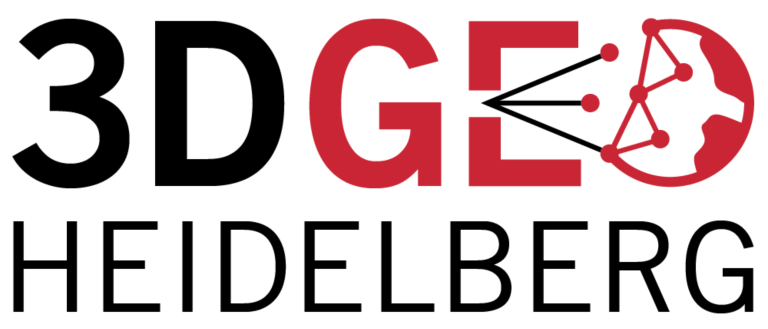GIScience News Blog
-
Behavioural Effects of Spatially Structured Scoring Systems in Location-Based Serious Games – A Case Study in the Context of OpenStreetMap
Location-based games have become popular in recent years, with Pokémon Go and Ingress being two very prominent examples. Some location-based games, known as Serious Games, go beyond entertainment and serve additional purposes such as data collection. Such games are also found in the OpenStreetMap context and playfully enrich the project’s geodatabase. Examples include Kort and…
-
First results of our multi-method field course in an aeolian sand dune field
During the first three days of the field course in Erg Chebi, data collection focussed on the star dune with groups of students applying different techniques of geophysical and topographic surveying. Today, data was checked to plan the remaining three field days. A recap of this intermediate data revision will follow. For today, we’d like…
-
Multi-method field course in an aeolian sand dune field
This week, the research groups Geomorphology and 3DGeo of the Institute of Geography at Heidelberg University are conducting a field course in the aeolian sand dune field Erg Chebbi in Morocco. The current field course is the second edition of “HeidelErg“. The aim is to teach students different methods of data acquisition for physical geography,…
-
New project: LOKI – Airborne Observation of Critical Infrastructures
On Feb 12, 2020, the kick-off meeting for the newly funded BMBF project LOKI – Airborne Observation of Critical Infrastructures (Luftgestützte Observation Kritischer Infrastrukturen) was hosted by the GIScience and 3DGeo research groups of Heidelberg University. The aim of the LOKI project is to develop an interdisciplinary system that enables fast and reliable airborne situation…
-
HELIOS used in a study on hetero-integration which enables fast switching time-of-flight sensors for light detection and ranging
The Heidelberg LiDAR Operations Simulator (HELIOS) is an open source laser scanning simulation framework for interactive simulation and visualization of terrestrial, mobile and airborne laser scanning surveys. It can be flexibly used for teaching and training of laser scanning, development of new scanner hardware and scanning methods, or generation of artificial scan data sets to…
-
Multitemporal Terrestrial Laser Scanning Point Clouds for Thaw Subsidence Observation
New paper on “Multitemporal Terrestrial Laser Scanning Point Clouds for Thaw Subsidence Observation at Arctic Permafrost Monitoring Sites” The paper investigates different methods for quantifying thaw subsidence using terrestrial laser scanning (TLS) point clouds. Thaw subsidence is a slow (mm‐cm per year) vertical displacement of the ground surface common in ice‐rich permafrost‐underlain landscapes. It is…
-
3DGeo licensed drone pilots
During the last weeks, members of the 3DGeo group were found studying for the “Kenntnisnachweisprüfung”, the official examination for drone pilots in Germany. Today, we are proud to announce that all six applicants from our group have passed both the theoretical test as well as a practical exam where they had to show their capability…
-
Colloquium Talk about healthsites.io: Building a baseline of health facility data in OpenStreetMap by M. Herringer
We are happy to invited to the presentation in the GIScience HD colloquium. Everybody interested is invited to join the presentations and the discussion afterwards. Building a baseline of health facility data in OpenStreetMap Markus Herringer, healthsites.io, Amsterdam, NL – Monday, February 10, 2020. 2.15 pm -Lecture Hall (room 015), Im Neuenheimer Feld 348, Institute…
-
GIScience Contributions to the 2019 State of the Map Academic Track proceedings
Recently the SOTM 2019 Heidelberg Academic Track Proceedings have been published. GIScience Research Group Heidelberg and HeiGIT contributed several talks and posters. Below you can find an overview. Contact us if you are interested in further details on ongoing research. Klonner, Hartmann, Djami, Zipf, A. (2019). “Ohsome” OpenStreetMap Data Evaluation: Fitness of Field Papers for…
-
‘Place’ in the GIScience Community – an indicative and preliminary Systematic Literature Review
The concept of place has recently gained importance in geographical information science (GIScience). One reason for this is the emergence of user-generated geographic information, which partially represents subjective everyday geographical encounters. No consensus, however, on how to deal with place in GIScience has yet been reached. A recently published paper presents a systematic literature review…
3D 3DGEO Big Spatial Data CAP4Access Citizen Science Climate Change Conference crisis mapping Crowdsourcing data quality deep learning disaster DisasterMapping GIScience heigit HELIOS HOT humanitarian humanitarian mapping Humanitarian OpenStreetMap team intrinsic quality analysis landuse laser scanning Lidar machine-learning Mapathon MapSwipe Missing Maps MissingMaps ohsome ohsome example Open data openrouteservice OpenStreetMap OSM OSM History Analytics Quality quality analysis remote sensing routing social media spatial analysis Teaching VGI Workshop


